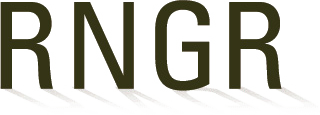
Ambrosia (dumosa)
|
Jean Graham Nursery Manager USDI NPS - Joshua Tree National Park Native Plant Nursery 74485 National Park Drive Twentynine Palms, California 92277 760-367-5565 http://www.ggnpa.org |
|
| Family Scientific Name: | Asteraceae | ||
|---|---|---|---|
| Family Common Name: | Sunflower Family | ||
| Scientific Name: | Ambrosia dumosa (Gray) Payne | ||
| Common Name: | White Bursage | ||
| Species Code: | AMBDUM | ||
| Ecotype: | Joshua Tree National Park, California | ||
| General Distribution: | Ambrosia dumosa is foundin the Mojave and western edge of the Colorado desert in southern California and Arizona. | ||
| Propagation Goal: | plants | ||
| Propagation Method: | seed | ||
| ProductType: | Container (plug) | ||
| Stock Type: | 2 gallon PVC pipe containers | ||
| Time To Grow: | 0 Weeks | ||
| Target Specifications: | Height: N/A<br> Caliper: N/A<br> Root System: Firm Root Plug in container. | ||
| Propagule Collection: | Seeds are hand collected in when achenes have fully matured. | ||
| Propagule Processing: | Seeds are allowed to dry for 4 to 6 weeks in paper bags in a warm, dry room. After seeds have been cleaned, they are stored under refrigeration in air tight containers at 7C. | ||
| Pre-Planting Treatments: | Seeds are soaked/leached in water for 10 to 24 hrs to remove any inhibitors and to allow full imbibition of seeds prior to sowing. br>Seeds are directly sown in open flats using a growing medium of 2 parts sand, 1 part mulch and 2 parts perlite (v:v:v) br> We have had 30% average germination on our ecotypes. | ||
| Growing Area Preparation/ Annual Practices for Perennial Crops: |
The Joshua Tree Native Plant Nursery is located in the Mojave Desert of southern California and has an average of 250 frost free days per year and annual rainfall of 5 to 10 cm (2 to 4 in.) The facility is comprised of three greenhouses,mist propagation beds and a shaded outdoor growing compound. All propagation environments are utilized at different stages of seedling growth to provide for the variance in temperature and shading requirements during the growing season. |
||
| Establishment Phase: |
Seedlings are germinated in a germinations chamber or under mist. After seedlings are well established and have at least 2 true leaves, they are transplanted into newspaper cylinders wrapped with polyvinyl food wrap. The newspaper container is 29 cm (11.5 in) tall and 7.5 cm (3 in) in diameter.The newspaper pots are filled with a growing medium of 2:1:1 (v:v:v) sand, mulch, and perlite. |
||
| Length of Establishment Phase: | 4 weeks | ||
| Active Growth Phase: |
Seedlings are ready for transplanting into larger containers at 8 to 12 weeks. The entire newspaper pot minus the plastic wrap is transplanted into the PVC tall containers using the same medium described for the newspaper containers. Osmocote time release fertilizer (9 mo release rate) (13 N:13P2O5:13K2O) is incorporated into the medium at the approximate rate of 22 g per 6l ( 2 gal) PVC containers. PVC containers are 37.5 cm tall(15 in) and are 15 cm (6 in)in diameter. Following transplanting, they are moved to the open growing compound that is covered with a 55% shadecloth during the summer months. During the months of intense summer heat, containers are irrigated by an automated drip system. |
||
| Length of Active Growth Phase: | 4 months | ||
| Hardening Phase: | Irrigation frequency and duration is gradually reduced for 4 to 8 weeks prior to out-planting. The shadecloth is removed from the open growing compound in October when daytime temperatures begin to cool. | ||
| Length of Hardening Phase: | 4 weeks | ||
| Harvesting, Storage and Shipping: | Containerized seedlings are over wintered directly in the open growing compound. | ||
| Length of Storage: | variable; depends on outplanting date | ||
Citation:
Graham, Jean. 2004. Propagation protocol for production of Container (plug) Ambrosia dumosa (Gray) Payne plants 2 gallon PVC pipe containers; USDI NPS - Joshua Tree National Park Native Plant Nursery Twentynine Palms, California. In: Native Plant Network. URL: https://NativePlantNetwork.org (accessed 2025/11/04). US Department of Agriculture, Forest Service, National Center for Reforestation, Nurseries, and Genetic Resources.



